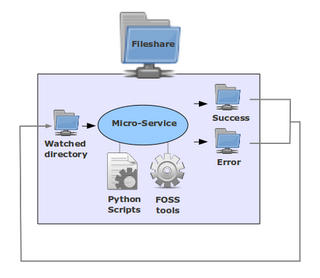Difference between revisions of "Micro-services"
| Line 12: | Line 12: | ||
==Micro-services in Archivematica Releases== | ==Micro-services in Archivematica Releases== | ||
| + | *[[Archivematica 0.10 Micro-services]] | ||
*[[Archivematica 0.9 Micro-services]] | *[[Archivematica 0.9 Micro-services]] | ||
*[[Archivematica 0.8 Micro-services]] | *[[Archivematica 0.8 Micro-services]] | ||
*[[Archivematica 0.7.1 Micro-services]] | *[[Archivematica 0.7.1 Micro-services]] | ||
Revision as of 10:45, 1 May 2013
Main Page > Documentation > Technical Architecture > Micro-services
Archivematica implements a micro-service approach to digital preservation. The Archivematica micro-services are granular system tasks which operate on a conceptual entity that is equivalent to an OAIS information package: Submission Information Package (SIP), Archival Information Package (AIP), Dissemination Information Package (DIP). The physical structure of an information package will include files, checksums, logs, submission documentation, XML metadata, etc..
These information packages are processed using a series of micro-services. Micro-services are provided by a combination of Archivematica Python scripts and one or more of the free, open-source software tools bundled in the Archivematica system. Each micro-service results in a success or error state and the information package is processed accordingly by the next micro-service. There are a variety of mechanisms used to connect the various micro-services together into complex, custom workflows. Resulting in a complete ingest to access system.
Archivematica implements a default ingest to access workflow that is compliant with the ISO-OAIS functional model. Micro-services can be distributed to processing clusters for highly scalable configurations.
